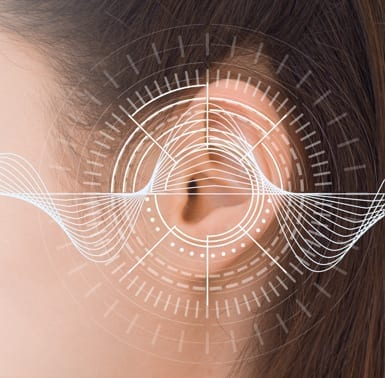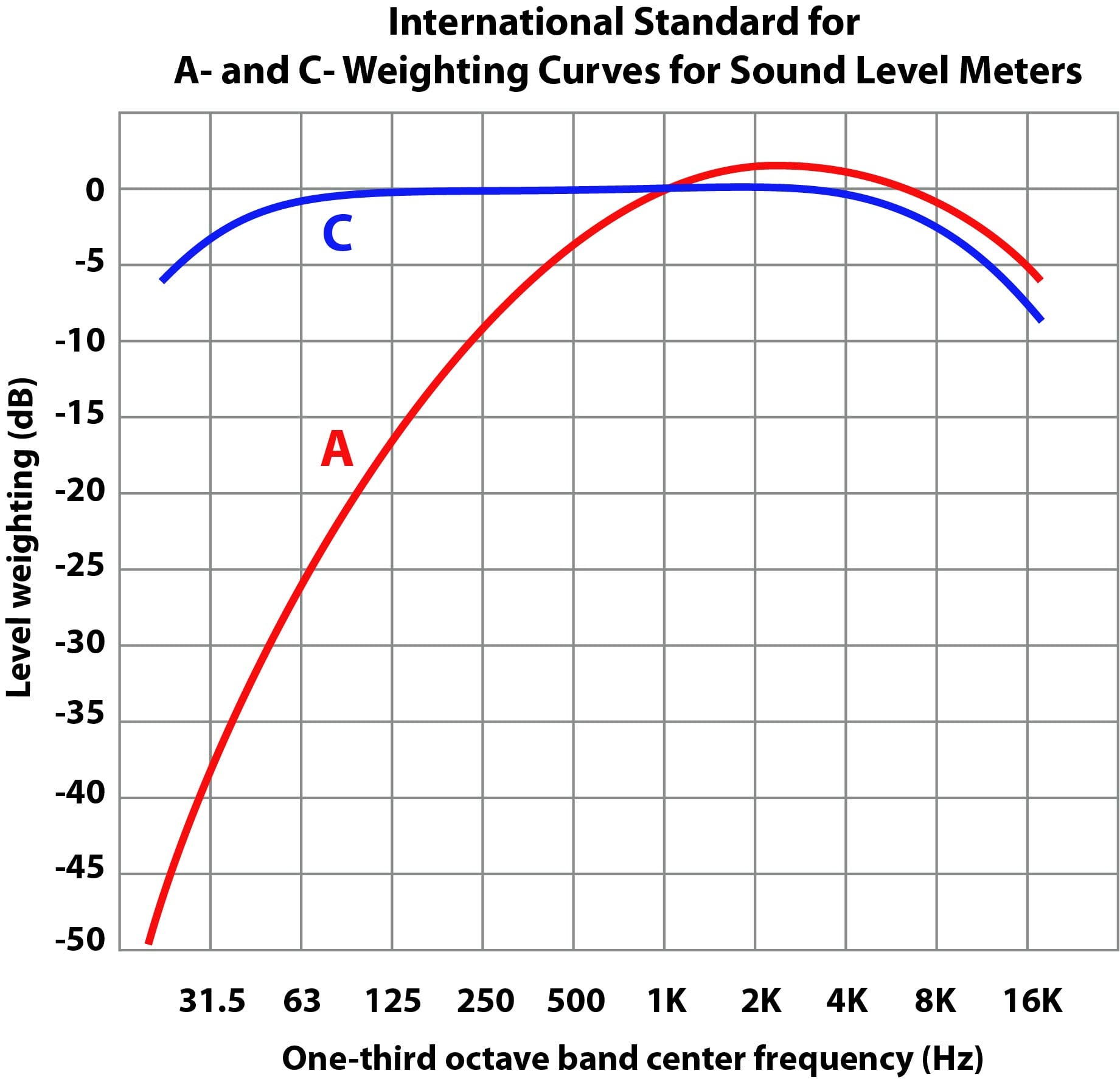Frequency-Weighting Sound Level Measurements: A-weighting dB(A) vs. C-weighting dB(C)

Understanding dB(A) and dB(C): How Sound Levels Are Measured
Most sounds can contain a mixture of many frequencies simultaneously. The human ear varies in its sensitivity to sounds of different frequency. Therefore, sound levels are often measured using a frequency-weighted filter which emulates the frequency sensitivity of the human ear. The frequency-weighting is referred to as the “A-scale.” Most instrumentation for measuring sound has the capability to weight all of the component frequencies of a sound, and sum them into a single number; sounds measured in this way are designated in units of A-weighted decibels dB(A). A dB(A) spectral-sum sound pressure level is a reasonable single-number representation of the perceived overall loudness of a complex sound that contains multiple different frequencies. For this reason, most guidelines and limits for noise outdoors or indoors, such as ordinances, regulations and By-laws, are specified in terms of a single-number dB(A) level. Sound levels can also be measured using a frequency-weighted filter which provides a more suitable indication of the low frequency content, for the purpose of evaluating “bass” sound which may travel/penetrate farther than treble sound; sounds measured in this way are designated in units of C-weighted decibels dB(C). Most instrumentation for measuring sound has the capability to weight all of the component frequencies of a sound, and sum them into a single dB(A) or dB(C) number.

